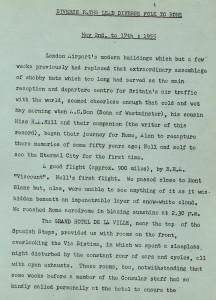The actual book being discussed is entitled ‘More Literary Drinkers’, but as we at Jot 101 haven’t read Pete Bunten’s ‘Literary Drinkers’, we will start with this sequel.
Bunten assembles the usual suspects in alphabetical order rather than in their degrees of bibulousness, which in some cases is not why they are in his book. They are: the Brontes, Roy Campbell (left), J.P.Donleavy, Ian Fleming, John Fothergill, Oliver Goldsmith, W.W.Jacobs, Jerome K Jerome, D.H.Lawrence, C.S.Lewis and J.R.R.Tolkein,Norman McCaig, Julian Maclaren Ross, Thomas Nashe, Eugene O’Neill, Dorothy Parker, Joseph Roth, Shakespeare, R.S.Surtees, Graham Swift , and Evelyn Waugh.
The book is well written, as it should be, considering that Bunten, who is ( or was ) a schoolteacher, is a graduate in English from Cambridge. And there are some amusing pen portraits. One of the best concerns the belligerent South African poet Roy Campbell, who comes across as a near-alcoholic, quite capable of downing 4 ½ litres of wine a day. Bunten is right to see him as a victim of his own determination to project himself as macho through reckless physical activity and alcohol. His fiancee’s father warned her against marrying a ‘dipsomaniac‘, but she ignored his advice and paid the price. The discovery of her affair with Vita Sackville West sent Campbell off on a lengthy bender, which seems to us the sign of an emotionally weak person, rather than a manly one. And is it manly, one asks, to physically attack an unarmed Stephen Spender and Geoffrey Grigson, who Bunten calls ‘ timid ‘,with a knobkerrie ? To evade such a drunken assault, as Grigson did, after having learnt that Spender had already been hit by Campbell, is hardly the action of a timid person. Later, Anthony West commented on the encounter with the gruff ‘ You should have kicked him in the balls ‘.In his brilliant Recollections (1984) Grigson recalls being a witness to another example of Campbell’s boorish behaviour.

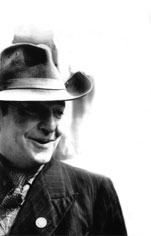

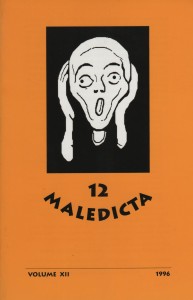
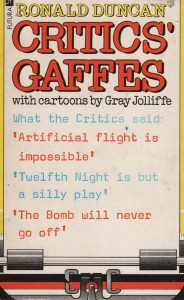 hilarious and sometimes shocking anthology, Critics’ Gaffes (1983), come from critics who supposedly know what they’re talking about. Others are the judgements of those who haven’t a clue. Perhaps Geoffrey Grigson nailed it when he described the romantic novelist and radio presenter Melvyn Bragg as ‘a media mediocrity who couldn’t tell good literature from old gym shoes.’ Mind you, like the stopped clock which tells the right time twice a day, a few of the following verdicts have the ring of truth.
hilarious and sometimes shocking anthology, Critics’ Gaffes (1983), come from critics who supposedly know what they’re talking about. Others are the judgements of those who haven’t a clue. Perhaps Geoffrey Grigson nailed it when he described the romantic novelist and radio presenter Melvyn Bragg as ‘a media mediocrity who couldn’t tell good literature from old gym shoes.’ Mind you, like the stopped clock which tells the right time twice a day, a few of the following verdicts have the ring of truth.
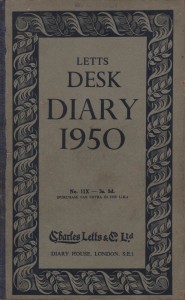

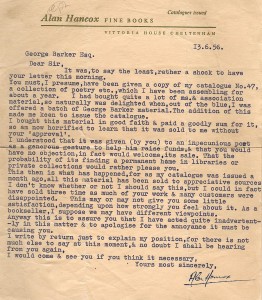
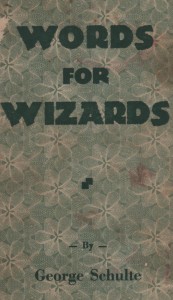
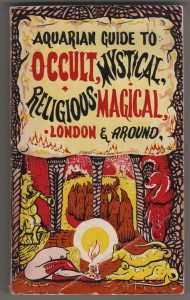
 This is a paperback published in California and written by two American stand up comedians, John Carfi and Cliff Carle, of ‘ funny ‘ messages that could be left on answering machines. It appeared in 1983, which means that quite a few of the jokes might not be acceptable in the more PC climate of 2018.
This is a paperback published in California and written by two American stand up comedians, John Carfi and Cliff Carle, of ‘ funny ‘ messages that could be left on answering machines. It appeared in 1983, which means that quite a few of the jokes might not be acceptable in the more PC climate of 2018.
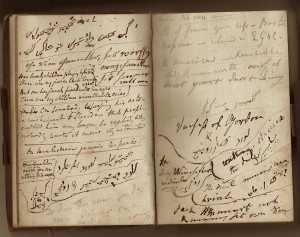 The front part is a short record of travels in Germany and Belgium in which the anonymous male diarist, who is accompanying his mother, at one point tells us that he was born in 1802, is very scathing about the appearance of most of his travelling companions. In one instance he remarks that the young son of the parson in the party ‘seemed to be as ugly as his father and as vulgar as his cousin’. He is singularly unimpressed by most of the foreigners he encounters along the way. For instance, he notes that his fellow diners at the Table d’Hote, were ‘12 disgusting looking Germans who luckily eat enormously & spoke little ‘. The following evening diners at the same table were’ rather more disgusting in their appearance & manner of eating than the day before ‘. Predictably, he is also critical of the meals he is obliged to eat and the inns that serve and accommodate him. In one inn he accuses the landlord of serving him a dish of greyhound puppy. Our diarist certainly places himself above the common lot. He seems knowledgeable about art and is a little snooty regarding the collections he views, suspecting that most of the paintings were copies from the masters. More positively, he is often ecstatic about the scenery and buildings he encounters and he particularly praises cathedrals and castles. We yearn for more, but unfortunately, the diary stops abruptly after thirty pages.
The front part is a short record of travels in Germany and Belgium in which the anonymous male diarist, who is accompanying his mother, at one point tells us that he was born in 1802, is very scathing about the appearance of most of his travelling companions. In one instance he remarks that the young son of the parson in the party ‘seemed to be as ugly as his father and as vulgar as his cousin’. He is singularly unimpressed by most of the foreigners he encounters along the way. For instance, he notes that his fellow diners at the Table d’Hote, were ‘12 disgusting looking Germans who luckily eat enormously & spoke little ‘. The following evening diners at the same table were’ rather more disgusting in their appearance & manner of eating than the day before ‘. Predictably, he is also critical of the meals he is obliged to eat and the inns that serve and accommodate him. In one inn he accuses the landlord of serving him a dish of greyhound puppy. Our diarist certainly places himself above the common lot. He seems knowledgeable about art and is a little snooty regarding the collections he views, suspecting that most of the paintings were copies from the masters. More positively, he is often ecstatic about the scenery and buildings he encounters and he particularly praises cathedrals and castles. We yearn for more, but unfortunately, the diary stops abruptly after thirty pages.